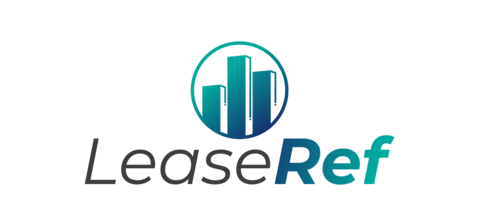The estoppel certificate stands as a cornerstone document, pivotal in securing transparency and trust among landlords, tenants, and buyers alike. Often likened to a snapshot, it captures the current state of lease agreements, serving as a definitive record that parties can rely on during transactions.
What is an Estoppel Certificate?
An estoppel certificate is a document used in commercial real estate transactions that confirms the terms under which a tenant occupies a property, thereby safeguarding the interests of all parties involved—landlords, tenants, and potential buyers.
Legally binding, this certificate is a declaration by the tenant that the lease details as presented by the landlord are correct and that there are no hidden conditions or disputes. It’s important in cases of property sales or refinancing, where clear and undisputed knowledge of existing leases significantly affects the outcome. By signing this certificate, tenants affirm their lease’s status, which in turn, supports the landlord in maintaining the property’s valuation and stability in the marketplace.
Purpose of an Estoppel Certificate
Estoppel certificates primarily serve to confirm the accuracy of the information regarding lease agreements in commercial real estate transactions. For landlords, these documents are essential for verifying tenant commitments and ensuring there are no discrepancies in lease terms that could affect property transactions. Landlords require these certificates when selling the property or securing financing, as they provide potential buyers or lenders with a transparent snapshot of the lease terms agreed upon by current tenants (transparent is the key word here).
This transparency helps all parties make informed decisions and facilitates smoother transactions by preempting potential disputes over lease conditions. Additionally, in a fluid market, estoppel certificates uphold the integrity of lease agreements during ownership transfers, ensuring that all conditions are respected and carried forward.
Estoppel Certificate Template
An estoppel certificate template is a vital tool for landlords in commercial real estate, ensuring that all pertinent lease information is accurately represented and agreed upon by the tenants. The template should be structured to include the following key elements:
- Tenant Information: Name of the tenant and details about the leased premises.
- Lease Commencement and Expiration Dates: Exact dates marking the beginning and end of the lease term.
- Rent Details: Amount of rent currently paid and any specifics regarding payment terms or future rent adjustments.
- Security Deposit: The amount held as a security deposit by the landlord.
- Confirmations and Declarations:
- Tenant confirms that the lease is in full effect and there are no breaches or defaults from either party.
- Any amendments or modifications to the original lease agreement are accurately documented.
- Tenant declares no existing disputes regarding the lease terms.
- Tenant Rights and Options: Details of any renewal options, purchase rights, or other special provisions granted to the tenant under the lease.
This document should be presented in a clear, easy-to-understand format, enabling both experienced and less experienced landlords to utilize it effectively in their dealings.
[TEMPLATE]
Key Components of an Estoppel Certificate
An estoppel certificate includes several crucial elements that provide a comprehensive overview of the lease agreement’s status and the tenant’s commitments. Tenant Information is a fundamental part of this document, listing the tenant’s name and detailed information about the leased premises, ensuring clarity about who is responsible for the lease. Lease Commencement and Expiration Dates are specified to confirm the active period of the lease, critical for understanding the timeline of tenant obligations. The Rent Details section records the current rent amount, including any special payment terms or scheduled future adjustments, which is vital for financial planning and assessment.
The Security Deposit section notes the amount held and its holder, which acts as a financial assurance for the landlord against potential damages or breaches of the lease. Under Confirmations and Declarations, the tenant verifies that the lease is in effect without modifications other than those explicitly noted, that no defaults are outstanding, and that there are no disputes over the lease. This part of the certificate is especially significant as it reassures all parties of the lease’s validity and the tenant’s adherence to its terms.
Tenant Rights and Options detailed in the certificate, such as renewal and purchase options, outline specific privileges the tenant may exercise, influencing future property management and transaction decisions. This comprehensive detailing ensures that all parties are fully aware of the terms and associated conditions, reinforcing transparency and trust in property transactions.
The Importance of Estoppel Certificates in Various Property Types
Estoppel certificates are particularly valuable across various types of commercial properties, from office buildings and retail spaces to industrial complexes and multi-family residential units. Each property type benefits differently from the clarity these certificates provide. In office buildings, where leases are typically complex and involve significant tenant improvements and concessions, estoppel certificates confirm the specifics of these arrangements and any subsequent amendments.
For retail spaces, they ensure that details such as exclusivity clauses, co-tenancy agreements, and percentage rents are clearly understood and agreed upon, which is crucial for maintaining the expected value of the property.
In industrial properties, estoppel certificates might focus more on clarifying the use of the property, any environmental responsibilities, and the condition of the property in terms of maintenance and modifications made by the tenant.
Process and Timeframes for Estoppel Certificates
The preparation and execution of estoppel certificates involve a clearly defined process that must be timely to avoid complications in real estate transactions. Typically, the landlord initiates the estoppel process by drafting the certificate based on the current lease documents and sends it to the tenant for verification and signature. It is crucial that tenants respond promptly, usually within a specified timeframe which can range from 10 to 30 days depending on the lease conditions or local laws.
During this period, tenants are expected to review the document thoroughly to confirm that all stated terms match their understanding and records of the lease. Any discrepancies found must be addressed and corrected before signing the certificate. This quick turnaround is vital, especially in situations involving property sales or refinancing, where the accuracy of lease information can significantly influence the deal.
Legal Protections and Risks
Estoppel certificates provide legal protections by establishing a clear and undisputed record of the lease terms as acknowledged by the tenant. This documentation is crucial for landlords as it minimizes the risk of tenant disputes over the terms of the lease during the sale or refinancing of the property. For tenants, signing an estoppel certificate that accurately reflects the lease terms protects their rights under the lease, ensuring that these are recognized and upheld by potential new owners or financiers.
However, there are inherent risks involved, particularly if the estoppel certificate contains errors or omissions. For landlords, an inaccurate certificate can mislead potential buyers or lenders, potentially leading to financial losses or legal challenges. Tenants face risks too; inaccurately confirming unfavorable conditions or waiving certain rights unknowingly can affect their operations and lease security. Therefore, careful review and legal consultation are advised for both parties before finalizing the document.
Common Issues with Estoppel Certificates
Handling estoppel certificates can sometimes present challenges, such as tenants refusing to sign the document or delays in its submission by real estate agents. Refusal to sign can arise from disagreements over the terms listed or misunderstandings about the lease obligations. To prevent such issues, clear communication and negotiation are essential to resolve any discrepancies and reach an agreement that reflects the true conditions of the lease.
Delays in submitting estoppel certificates, particularly through intermediaries such as real estate agents, can jeopardize property transactions, leading to missed deadlines and potential deal breakdowns. Landlords should monitor the process closely and ensure that all parties understand the importance of adhering to the agreed timelines.



